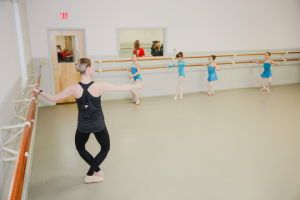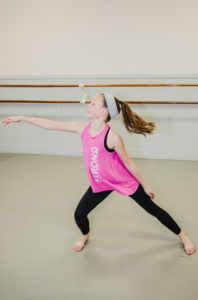The Importance of Dance Health: Rest & Injury Prevention
Why Dance Health Matters
To remain fit, it’s imperative that you take care of your body properly to maintain ideal dance health. Dancing allows you to stay active, meet new people and fall in love with a new hobby. However, sometimes dancers are prone to certain injuries due to the repetitive nature of the sport. The best way to avoid injuries is by staying strong, keeping an eye on your nutrition and paying attention to your mental health. Let’s explore 5 ways to avoid dance-related injuries this year and learn more about dance health.
- Rest
 Although it’s sometimes overlooked, rest is an important key to injury prevention. Allowing your body the time it needs for muscles to relax and healis vital to remaining strong and healthy. According to Dance Informa,“when your muscles are sore the day after working really hard it’s because you’ve created tiny micro tears in your muscle fibers. It is when those micro tears heal that your muscles become stronger, and healing must take place during times of rest.”
Although it’s sometimes overlooked, rest is an important key to injury prevention. Allowing your body the time it needs for muscles to relax and healis vital to remaining strong and healthy. According to Dance Informa,“when your muscles are sore the day after working really hard it’s because you’ve created tiny micro tears in your muscle fibers. It is when those micro tears heal that your muscles become stronger, and healing must take place during times of rest.”
If complete rest isn’t practical, then modify your workout or level of activity, instead. For example, opt for low-impact exercises to give your body a break or try to work a different muscle group than you did the day prior.
Rest is important to avoid muscle fatigue, so don’t be afraid to speak up when you feel like your body needs a break!
- Nutrition
It goes without saying that the food you fuel your body with is imperative to remain strong. The proper foods is imperative for dance health. Here are a few important tips to keep in mind regarding your nutrition:
- Don’t skip meals: Try to eat something every 3-4 hours during your most activetime of day to keep your body (and your mind) from becoming fatigued.
- Aim for lots of color: Think about balancing your plate each meal with tons of vibrant colors, found in fruits and vegetables. According to Better Health, “these foods are rich in antioxidants and important vitamins and minerals for managing inflammation. Examples of Vitamin C foods include oranges, strawberries, tomatoes, and bell peppers, and Vitamin A foods include sweet potatoes, carrots, and dark leafy greens (spinach and kale).”
- Stay hydrated: We’ve talked about the importance of staying super hydrated previously! Water helps transport nutrients within your body, remove waste products and maintain your body temperature throughout various environmental conditions. Aim to drink at least 2800-3500ml (94-117 oz) of fluids every day. That’s about 12 – 15 cups. (Dance Informa, 2012).
- Core Strength
 Core strength is key to proper dance health. Dancing requires a strong core to maintain excellent stability and balance. The stronger your core, the more easily you’re able to engage with other key muscle groups. “Strong muscles in the core also decrease the risk of injury. Dancers are particularly prone to low back injuries because they must frequently put their backs through an extreme range of motion while dancing” (Livestrong, 2017).
Core strength is key to proper dance health. Dancing requires a strong core to maintain excellent stability and balance. The stronger your core, the more easily you’re able to engage with other key muscle groups. “Strong muscles in the core also decrease the risk of injury. Dancers are particularly prone to low back injuries because they must frequently put their backs through an extreme range of motion while dancing” (Livestrong, 2017).
Additionally, core strength stabilize the torso and improves extremity control, according to an article in the February 2012 issueof Dance Magazine. Muscular imbalances and weakness of the abdominal and spinal muscles frequently contribute to injuries.
Looking for some challenging core exercises to improve your dance health? We have you covered! We’ve previously outlined three core exercises from the Rockettes here >
- Emotional Health
Feeling supported in your dance journey is incredibly important to your dance health. At KDC, our instructors are invested in your success as a dancer. They’re also committed to helping you achieve whatever your specific dance goals may be, from improved strength to learning a new, advanced dance routine. It’s important that a dancer receives positive feedback, encouragement and is assured they’re dancing in a safe environment.
According to Dance Informa, researchers examining mood among dancers have found correlations between negative factors like high tension and increased injury occurrence. Our minds and our bodies are intrinsically linked so we need to put just as much attention into our mental health as we do our physical health to ensure a healthy body.”
Feeling stressed or unhappy? Let your instructor know so they can help you come up with a game plan.
- Cross Training
 One way to avoid dance related injuries and maintain dance health is by exercising in a variety of ways that differ from your dance actives. This will allow you to strengthen different areas of your body, improve your overall endurance and avoid fatiguing one particular muscle group.
One way to avoid dance related injuries and maintain dance health is by exercising in a variety of ways that differ from your dance actives. This will allow you to strengthen different areas of your body, improve your overall endurance and avoid fatiguing one particular muscle group.
For example, you may not typically do cardio during your dance training. If this is the case, setting a goal to do 30-40 minutes of cardio exercises several times a week will make a big difference in how your body performs during your dance routines and will also help increase your stamina. “As always, do this in moderation and in short intervals to avoid stressing your joints” (Hopkins Medicine, 2018).
According to Dance Informa, it’s important to cross train outside of dance to focus on cardiovascular endurance (getting your heart rate up), muscular endurance (making your muscles burn) and muscular strength (making your muscles sore) … it’s favorable to do non-dance and low-impact activities to achieve this.
Do you have a favorite non-dance exercise that you love to do? Let us know on our Facebook page!
In Summary
It’s important to be aware of how you can avoid dance related injuries and maintain great dance health. This allows you to remain in great health throughout the dance season. There are several ways to do this, including proper rest, great nutrition, cross training, being aware of your emotional health and strengthening your core muscles. Below are additional tips for injury prevention, from Hopkins Medicine and Better Health:
- Always wear proper shoes and attire.
- Warm up before training or performances.
- Cool down after a dance session and stretch again.
- Don’t push yourself too far or too fast, especially if you are a beginner.
- Concentrate on correct posture and your dance technique.
Sources:
Dance Informa
Better Health
Kennebec Dance Center, Blog
Rockettes
Kennebec Dance Centre, Blog
Live Strong
Hopkins Medicine
